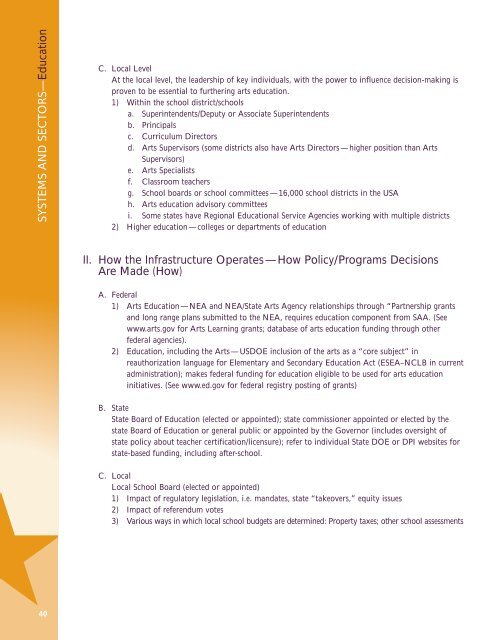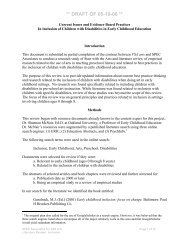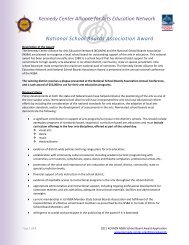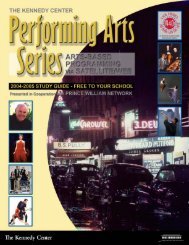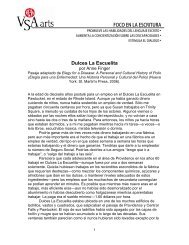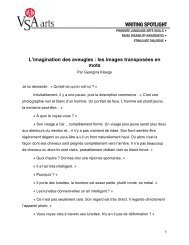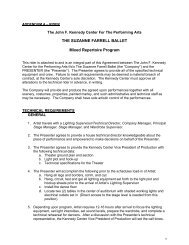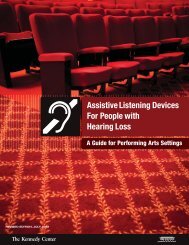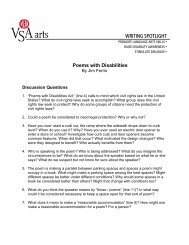KCAAEN Leadership Kit - The John F. Kennedy Center for the ...
KCAAEN Leadership Kit - The John F. Kennedy Center for the ...
KCAAEN Leadership Kit - The John F. Kennedy Center for the ...
Create successful ePaper yourself
Turn your PDF publications into a flip-book with our unique Google optimized e-Paper software.
SYSTEMS AND SECTORS—Education<br />
C. Local Level<br />
At <strong>the</strong> local level, <strong>the</strong> leadership of key individuals, with <strong>the</strong> power to influence decision-making is<br />
proven to be essential to fur<strong>the</strong>ring arts education.<br />
1) Within <strong>the</strong> school district/schools<br />
a. Superintendents/Deputy or Associate Superintendents<br />
b. Principals<br />
c. Curriculum Directors<br />
d. Arts Supervisors (some districts also have Arts Directors—higher position than Arts<br />
Supervisors)<br />
e. Arts Specialists<br />
f. Classroom teachers<br />
g. School boards or school committees—16,000 school districts in <strong>the</strong> USA<br />
h. Arts education advisory committees<br />
i. Some states have Regional Educational Service Agencies working with multiple districts<br />
2) Higher education—colleges or departments of education<br />
II. How <strong>the</strong> Infrastructure Operates—How Policy/Programs Decisions<br />
Are Made (How)<br />
A. Federal<br />
1) Arts Education—NEA and NEA/State Arts Agency relationships through “Partnership grants<br />
and long range plans submitted to <strong>the</strong> NEA, requires education component from SAA. (See<br />
www.arts.gov <strong>for</strong> Arts Learning grants; database of arts education funding through o<strong>the</strong>r<br />
federal agencies).<br />
2) Education, including <strong>the</strong> Arts—USDOE inclusion of <strong>the</strong> arts as a “core subject” in<br />
reauthorization language <strong>for</strong> Elementary and Secondary Education Act (ESEA–NCLB in current<br />
administration); makes federal funding <strong>for</strong> education eligible to be used <strong>for</strong> arts education<br />
initiatives. (See www.ed.gov <strong>for</strong> federal registry posting of grants)<br />
B. State<br />
State Board of Education (elected or appointed); state commissioner appointed or elected by <strong>the</strong><br />
state Board of Education or general public or appointed by <strong>the</strong> Governor (includes oversight of<br />
state policy about teacher certification/licensure); refer to individual State DOE or DPI websites <strong>for</strong><br />
state-based funding, including after-school.<br />
C. Local<br />
Local School Board (elected or appointed)<br />
1) Impact of regulatory legislation, i.e. mandates, state “takeovers,” equity issues<br />
2) Impact of referendum votes<br />
3) Various ways in which local school budgets are determined: Property taxes; o<strong>the</strong>r school assessments<br />
40


